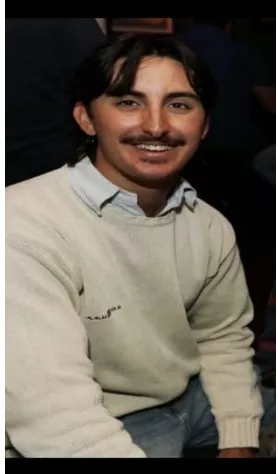

An account from a summer student researcher
My name is Emma Kiely, and I am a third year applied physics student here at the University of Limerick. Last summer, I learned of the opportunities available to student to work with different physics department researchers. So, being eager to improve both my laboratory and computational skills, I decided to apply to work with two physicists: Dr Sarah Guerin, and Dr Robert Lynch. I was fortunate to secure a spot in both of their dynamic research teams! As an intern working under Dr Sarah Guerin, I was mainly focused on the production of crystals and the analysis of crystal measurements. In the lab, I was given the task to grow sulfamic acid and amino acid co-crystals. By grinding stock samples of sulfamic acid and different amino acids (such as histidine and glycine), I was able to grow many samples which I then measured for their piezoelectric properties using the piezometer in the Bernal Institute. In the computer lab, I worked with crystallographic information files (cifs) of different sulfa-drugs, and I separated the active pharmaceutical ingredient from the co-former (what helps form the crystal) using a software called “VESTA”. I then used these results to calculate the binding energies of the crystals with density functional theory calculations using the ICHEC supercomputer in Dublin. In addition to this, I was responsible for calculating the elastic moduli of some photosalient crystals, which made it into a research paper titled “Regulating photosalient behaviour in dynamic metalorganic crystals”!
In Dr Robert Lynch’s lab, my primary focus was on understanding the electrochemistry in vanadium flow batteries. I measured the conductivity of different concentrations of magnesium sulphate, sulphuric acid, and sulphuric acid/vanadium solutions using a few different-shaped cells. Using numerous analysis techniques, I was able to calculate the precise concentrations of each solution, the resistivity during the measurements of the cells, and the conductivity of the solutions in the cells. In addition to the countless calculations and the solution making, I was tasked with making a battery that solution could flow through using two cells, a pump, and a vanadium solution reservoir. This is a patented invention earned by Dr. Lynch and his team. Being a physics student at UL has opened up many different research opportunities to me and I am grateful to have been a part Dr Sarah Guerin’s and Dr Robert Lynch’s research teams. Hopefully someday, I will find myself working alongside these esteemed mentors. The possibilities are vast when studying physics!

An account from a student on co-op placement
My Name is Robert Leahy. As Part of my Bachelor of Science in Applied Physics, I was required to complete an 8-month co-operative education placement. For this placement, I was offered an internship in Regeneron Ireland D.A.C. The site, located in Raheen, Co. Limerick, is one of two Industrial Operations and Product Supply (IOPS) sites. The other IOPS site is located in Rensselaer (RENS) in upstate New York. I was offered a role as an intern in the Chemistry, Manufacturing and Controls - Regulatory Sciences (CMC RS) department. The primary responsibilities of the CMC RS department are to communicate accurately and transparently the science behind the development, characterization, manufacture, and control of Regeneron's products to support the submission and approval of clinical and commercial marketing license applications. The group also provides tactical and operational direction by communicating current regulatory requirements to IOPS stakeholders. As of June 2023, the group has 88 members, with 6 stationed in Raheen, and the rest in New York.
Regeneron has an incredibly well-structured intern programme, giving students an opportunity to gain industry experience in a variety of departments in one of the world’s leading biotech companies. Close to 140 interns were taken on in Raheen during my tenure. Internships at Regeneron are available to students from all backgrounds, and my placement allowed me to build lasting connections, getting to know students from biochemical and business-related fields as well as established experts from a range of departments.
Throughout my internship, different classes were made available to me, both internal and through sites like LinkedIn Learning. This provided the perfect platform through which to make personal development plans. Recognising the similarities between my coursework and the roles of my position. This made it particularly easy to set personal improvement goals, such as learning to code in Python in my spare time, and improve my technical writing skills, as n college, I write around one lab report per week, and a longer, formal lab report every few weeks. CMC RS specialises in writing reports for regulatory drug submissions. The main thing that stuck with me from my time in Regeneron was the mindset that everybody’s work was making a difference to the lives of people suffering conditions that Regeneron’s products were made to combat. This feeling of making a difference influenced my choice of Final Year Project, electing to do a project applicable to biomed, titled Nanoparticles for Drug Delivery Applications, under the supervision of Dr. Nanasaheb Thorat.
